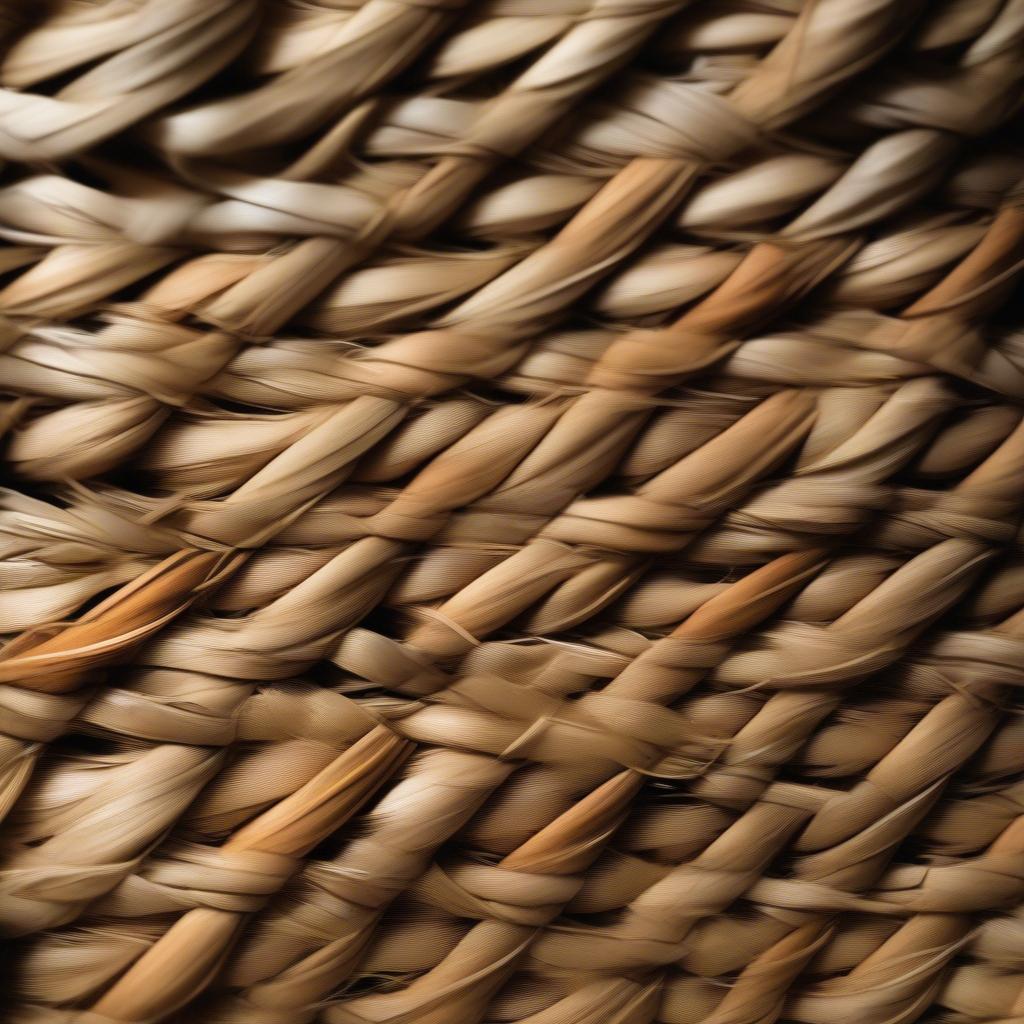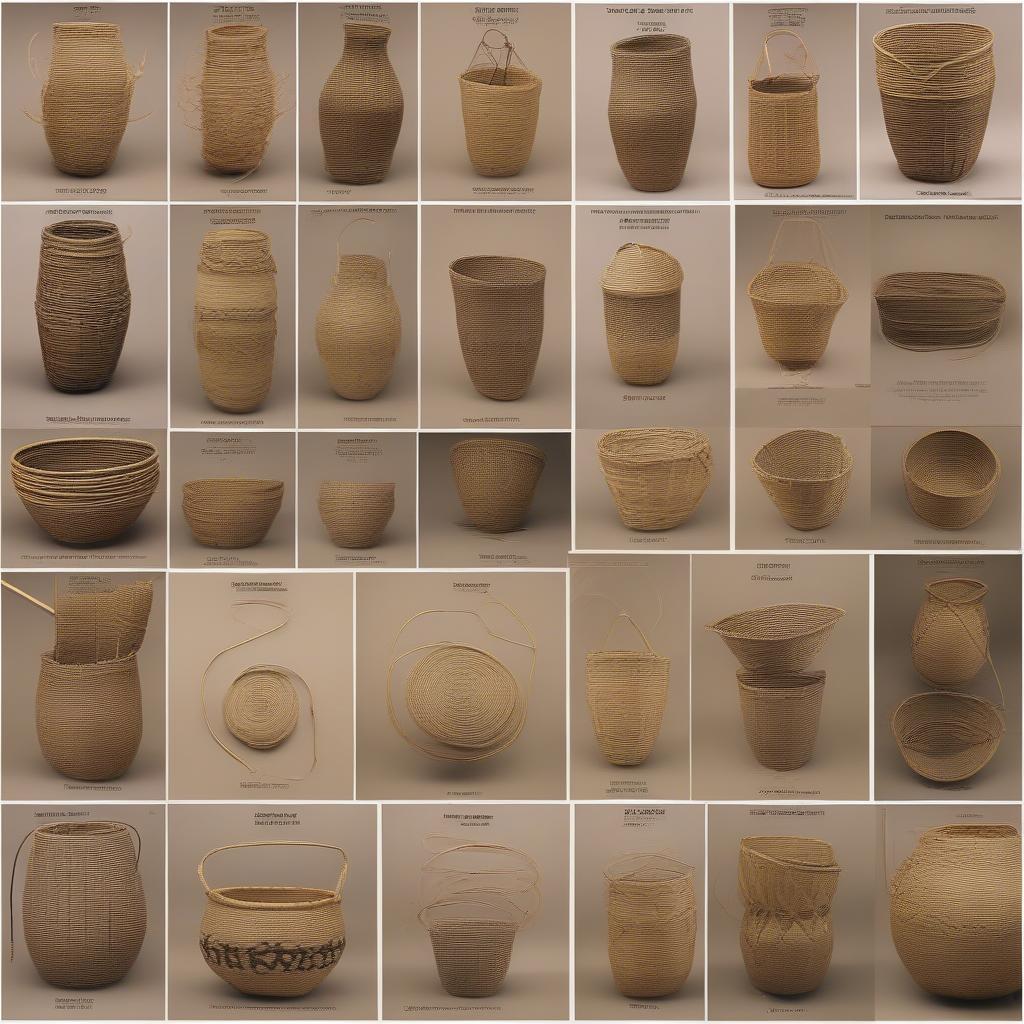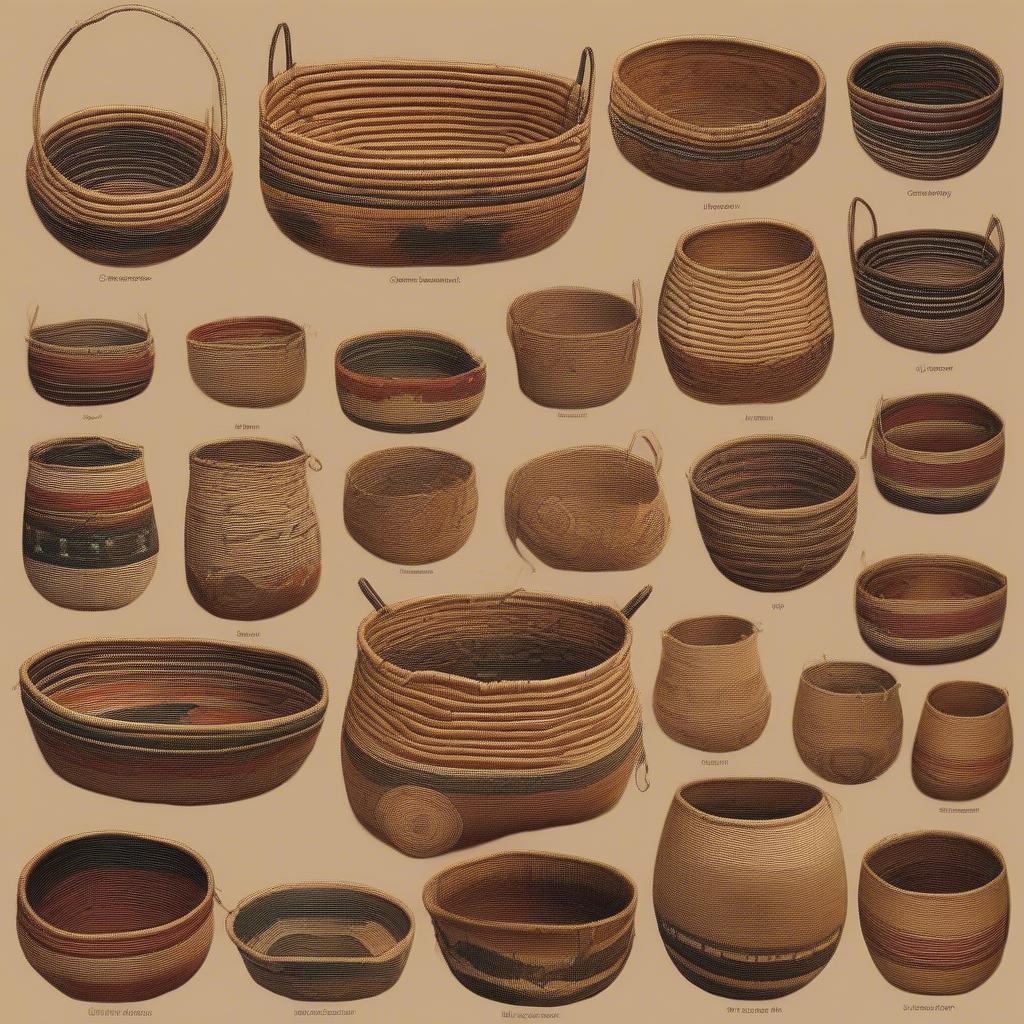Basket Weaving
How to Identify Native American Basket Weave
Learning How To Identify Native American Basket Weave is a journey into the heart of diverse cultures and artistic traditions. Recognizing the unique characteristics of these baskets not only deepens our appreciation for the artistry involved but also helps us understand the rich history and cultural significance they hold. This guide will provide you with the essential knowledge and tools to identify authentic Native American basketry.
 Close-up view of a Native American basket weave, showing the intricate details of the weaving technique and the natural materials used.
Close-up view of a Native American basket weave, showing the intricate details of the weaving technique and the natural materials used.
Regional Styles and Materials: Key Identifiers
Native American basket weaving varies significantly across different regions and tribes. Each tribe has developed its own distinct style, techniques, and preferred materials, reflecting their unique environment and cultural practices. For example, the pueblo tribe basket weaving is known for its intricate designs and use of natural dyes. Identifying these regional variations is crucial in determining the origin and authenticity of a basket. Materials like willow, cedar bark, sweetgrass, and pine needles are common, and their preparation and use are often specific to particular tribes.
Understanding Weaving Techniques
The weaving techniques themselves offer crucial clues for identification. Look for specific patterns like coiling, plaiting, twining, and wicker work. Each technique produces a unique visual texture and structure, often associated with particular tribes or regions. For instance, the tight, intricate antique basket diamond weave is a hallmark of certain Northeastern tribes. Examining the weave closely can reveal not only the skill of the weaver but also the cultural context of the basket.
 Different types of Native American basket weaving techniques, including coiling, plaiting, twining, and wicker work.
Different types of Native American basket weaving techniques, including coiling, plaiting, twining, and wicker work.
Design Motifs and Their Significance
The designs woven into Native American baskets are more than just decorative elements. They often carry symbolic meanings related to the tribe’s history, beliefs, and connection to the natural world. Geometric patterns, depictions of animals, and representations of celestial bodies can all hold deep cultural significance. Why did Indians weave baskets? Often, it was for more than just utilitarian purposes; baskets served as a form of storytelling and cultural preservation. Learning to interpret these designs provides invaluable insights into the cultural narrative embedded within each basket.
Recognizing Authenticity: Avoiding Imitations
Unfortunately, the market is flooded with imitation Native American baskets. Being able to differentiate between genuine and counterfeit pieces is essential for both collectors and those who wish to support Native American artists. Look for consistency in materials, weaving techniques, and design motifs. Pay attention to the quality of craftsmanship and the details of construction. A small native american circular weave basket with triangular handles can be just as significant as a larger piece, depending on its authenticity and craftsmanship. Researching specific tribal styles and consulting with reputable experts can help you avoid purchasing counterfeit items.
“Authentic Native American basketry tells a story,” says renowned basketry expert Dr. Anya Petrova. “Each stitch, each material, each design element carries a piece of cultural heritage. It’s crucial to learn to appreciate and identify these unique characteristics to preserve these traditions for future generations.”
 Examples of authentic Native American baskets with details highlighting key features for identification.
Examples of authentic Native American baskets with details highlighting key features for identification.
Connecting with the Craft: Resources and Further Exploration
Learning how to identify Native American basket weave is an ongoing process. Numerous resources are available to deepen your understanding and appreciation of this art form. Museums, cultural centers, and online databases offer valuable information about different tribal traditions and artistic styles. Connecting with Native American artists and communities directly is an invaluable way to learn about the cultural significance of basket weaving and support the continuation of these ancient traditions. Consider exploring resources like native american weaving baskets warm springs to learn more about specific tribal traditions.
“The beauty of Native American basketry lies not just in its aesthetic appeal but also in its profound cultural depth,” adds Dr. Petrova. “Engaging with this art form is a journey of discovery, connecting us with the rich tapestry of Indigenous cultures and their enduring connection to the land.”
In conclusion, learning how to identify Native American basket weave allows us to appreciate the artistry, cultural significance, and historical depth of these remarkable creations. By understanding the regional styles, materials, weaving techniques, and design motifs, we can better distinguish authentic pieces and support the continuation of these vital traditions.
FAQ
- What are the most common materials used in Native American basket weaving?
- How can I tell the difference between coiling and plaiting techniques?
- What are some common design motifs found in Native American baskets?
- How can I avoid buying counterfeit Native American baskets?
- Where can I find more information about Native American basket weaving traditions?
- What are some examples of regional variations in Native American basketry?
- How can I support Native American basket weavers?
Need support? Contact our hotline at +84 388 951 999 or visit our offices in Hanoi, Vietnam, or Tech Avenue, Suite 12, San Francisco, CA 94105, USA. We have a 24/7 customer service team.
